Discover 5 hidden attractions, cool sights, and unusual things to do in Tifton (United States). Don't miss out on these must-see attractions: Agrirama, Tift County Courthouse, and Tifton Residential Historic District. Also, be sure to include Tift County School District in your itinerary.
Below, you can find the list of the most amazing places you should visit in Tifton (Georgia).
Table of Contents
Agrirama
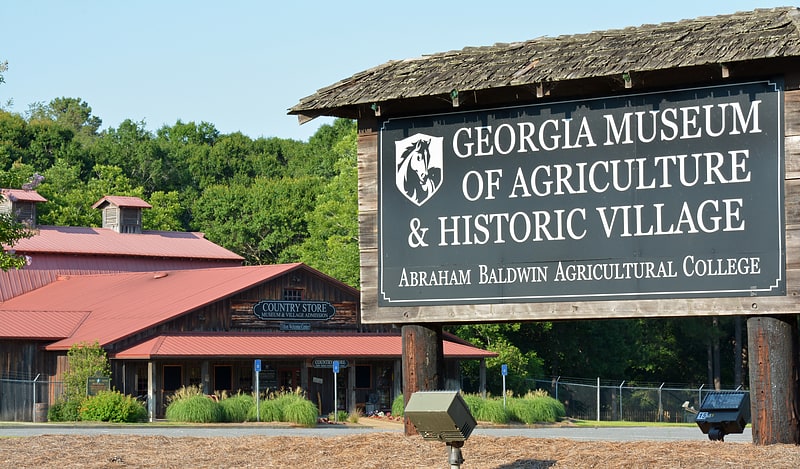
The Georgia Museum of Agriculture & Historic Village, formerly known as Agrirama, is a 19th-century living museum located in Tifton, Georgia. It opened on July 4, 1976. The grounds consist of five areas: a traditional farm community of the 1870s, an 1890s progressive farmstead, an industrial sites complex, rural town, national peanut complex, and the Museum of Agriculture Center.
Over 35 structures have been relocated to the 95-acre (380,000 m2) site and faithfully restored or preserved including the Vulcan Steam Train running on 3 ft (914 mm) narrow gauge track. Costumed interpreters explain and demonstrate the lifestyle and activities of this time in Georgia's history. It is located at 1392 Whiddon Mill Road off I-75 at Exit 63B.
The museum is a facility of Abraham Baldwin Agricultural College.[1]
Address: 1392 Whiddon Mill Rd, 31793-7800 Tifton
Tift County Courthouse
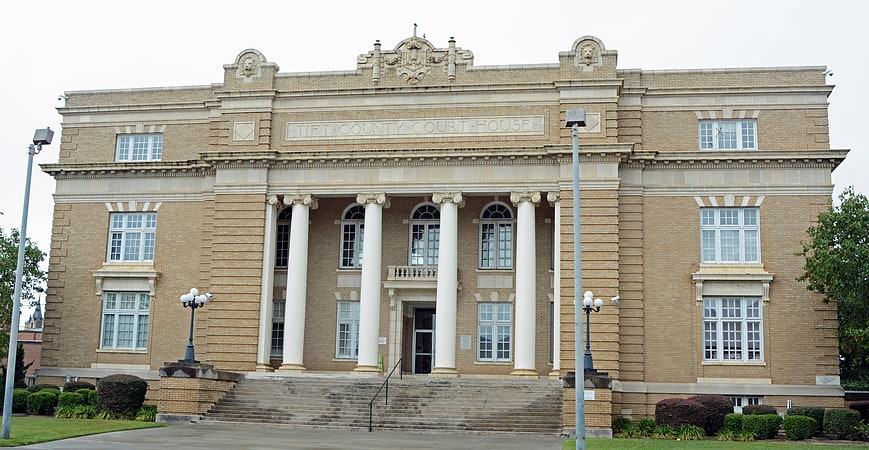
Courthouse. The Tift County Courthouse, built in 1912-1913, is a historic courthouse building located in Tifton, Georgia. It was designed by Atlanta-based architect William Augustus Edwards who designed one other courthouse in Georgia, two in Florida and nine in South Carolina as well as academic buildings at 12 institutions in Florida, Georgia and South Carolina. On September 18, 1980, it was added to the National Register of Historic Places.[2]
Address: 245 Love Ave, Tifton
Tifton Residential Historic District
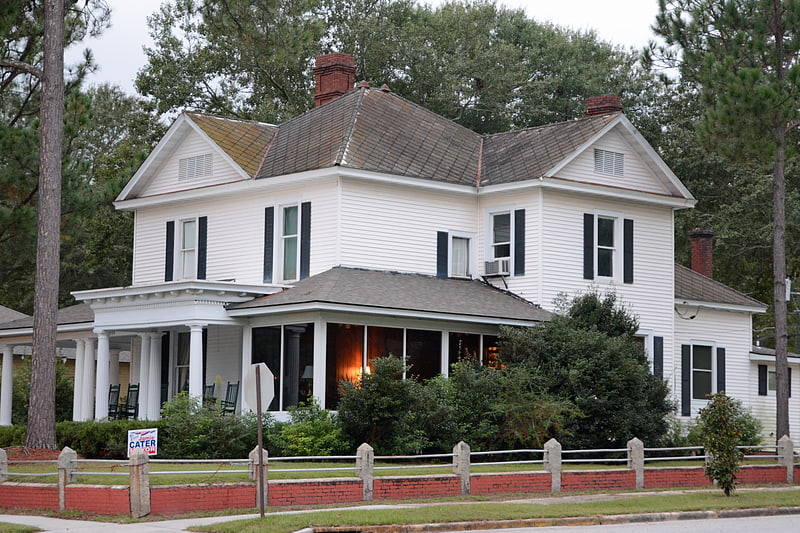
The Tifton Residential Historic District, in Tifton, Georgia, is a historic district which was listed on the National Register of Historic Places in 2008.[3]
Tift County School District
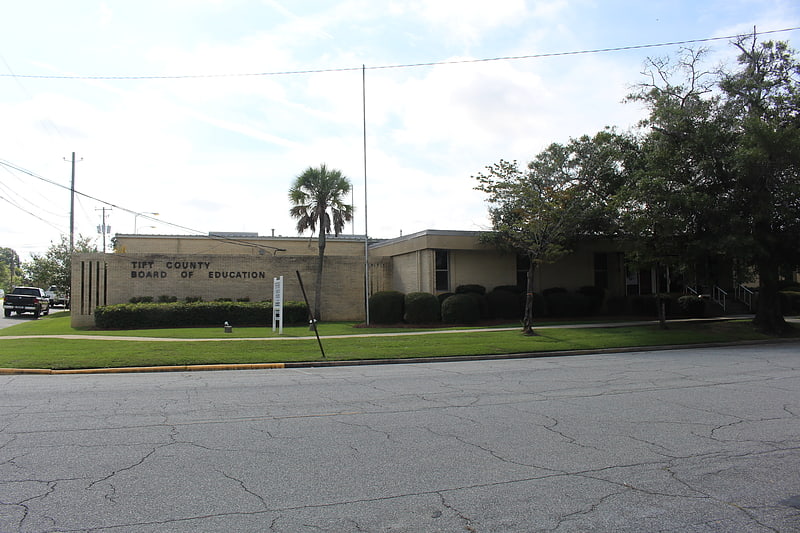
School district. The Tift County School District is a public school district in Tift County, Georgia, United States, based in Tifton. It serves the communities of Omega, Phillipsburg, Tifton, Ty Ty, and Unionville.[4]
Tifton Commercial Historic District
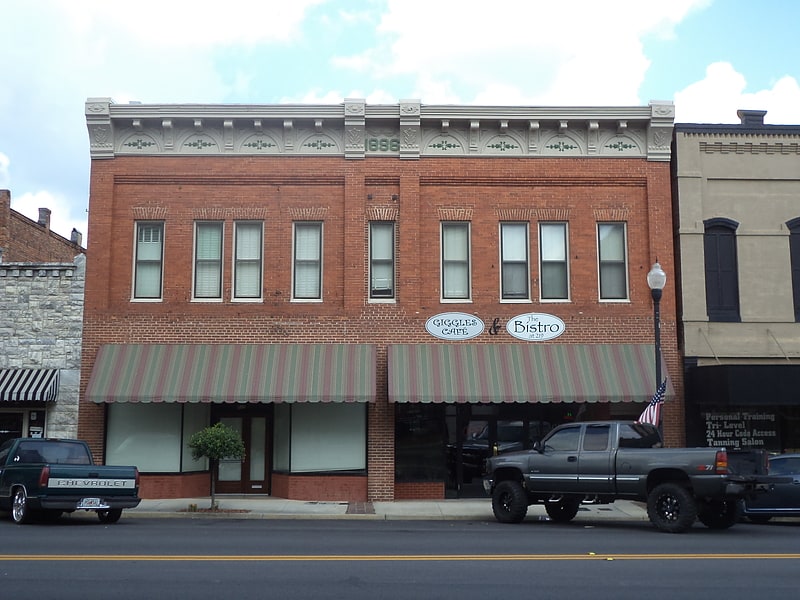
Historical place in Tifton, Georgia. Tifton Commercial Historic District, in Tifton in Tift County, Georgia, is a historic district that was listed on the National Register of Historic Places in 1986 and expanded in 1994. The original listing was portions of 10 blocks including buildings from the 1890s to the late 1930s, most built of brick.
The original district was 35 acres (14 ha) in size and included two groups of building in areas on the north and south sides of east–west Atlantic Coast Line Railroad, to the east of the north–south Southern Railway line. It included 57 contributing buildings and one contributing structure.
Notable resources are:
- Tift County Courthouse (1912), Beaux Arts in style, designed by William A. Edwards, separately NRHP-listed in 1980
- Lockeby Building (1937), deemed "a fine local example" of Art Deco with "its cast-stone vertical banding"
- Tift Theatre (1937), Art Moderne, with a multi-colored Carrara glass facade
- Myon Hotel (1906), now the Tifton City Hall, "massive", with three stories, with Georgian Revival influence, designed by Montgomery, Alabama architect B.B. Smith
- former U.S. Post Office (1914), the town's library by 1985, Renaissance Revival, design credited to Oscar Wenderoth
- former Bank of Tifton (1917), a C&S Bank in 1985, "a fine example of the Neoclassical style", also designed by William A. Edwards
- former Union Station (1916), the Chamber of Commerce in 1985, in long, low Prairie-influenced style
- Twin Brick Warehouses (1922 and 1925), on former site of Tift's sawmill, at the east edge of the district, landmarks "by virtue of their immense size (approximately 100 by 400 feet (30 m × 122 m) each) and their easily recognizable stepped-parapet fronts"
Three buildings had received Preliminary Certifications of Significance from the National Register Programs Division of the National Park Service Southeast Regional Office:
- 214 East Second Street (December 6, 1983);
- the Lockeby Building, corner of Third and Main (February 27, 1985), and
- Myon Hotel (February 27, 1985).
The amendment in 1994 expanded the district by 15 acres (6.1 ha) to include four blocks of mostly one- and two-story commercial buildings, including warehouses. It added 28 contributing buildings. The Masonic Lodge building in this area is the only three-story building in the increase.
The amendment in 1994 also recognized contributing building status for the Bowen Building, an Art Deco building built c. 1900 but renovated extensively in 1937 after a fire, which is located at the southwest corner of Third Street and South Main Street. In 1994, the corner tenant in the building was a drug store, and the other portion was a Christian bookstore.[5]